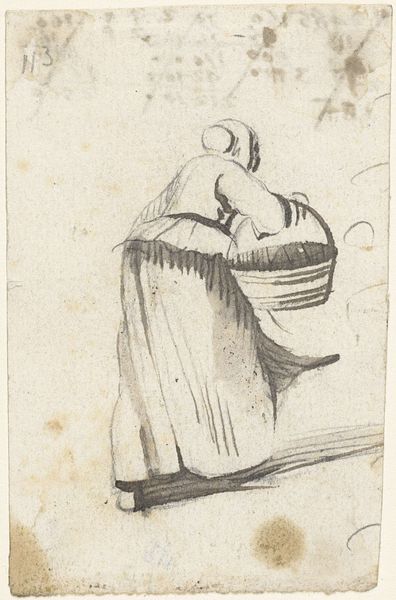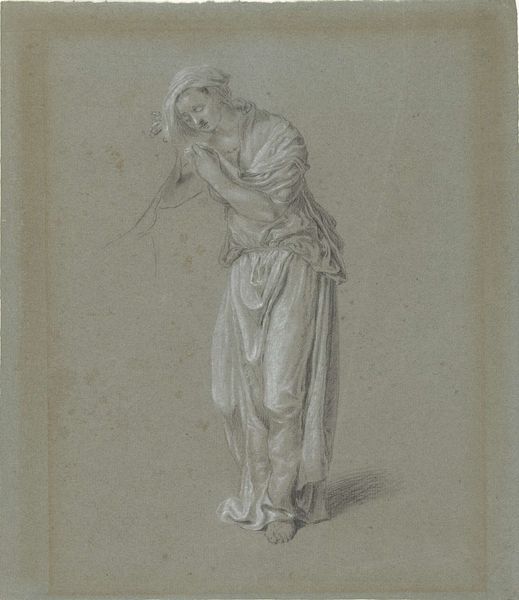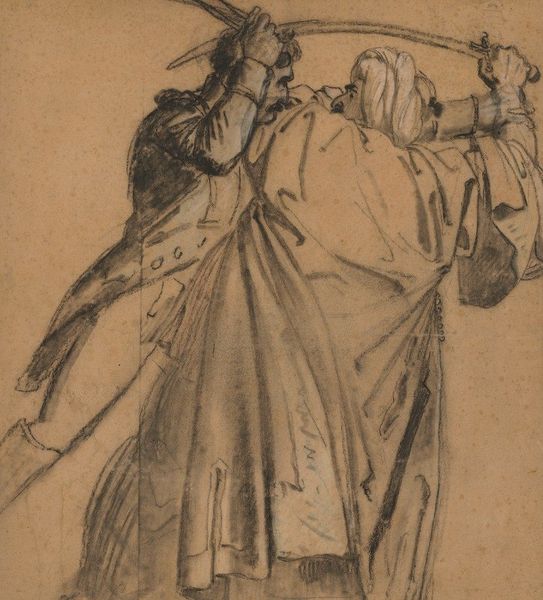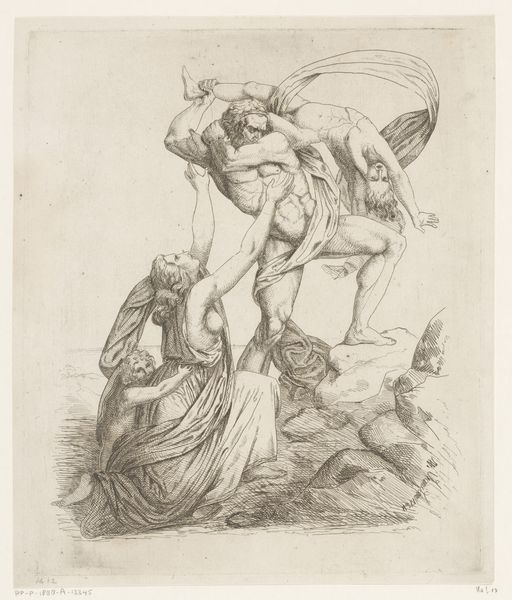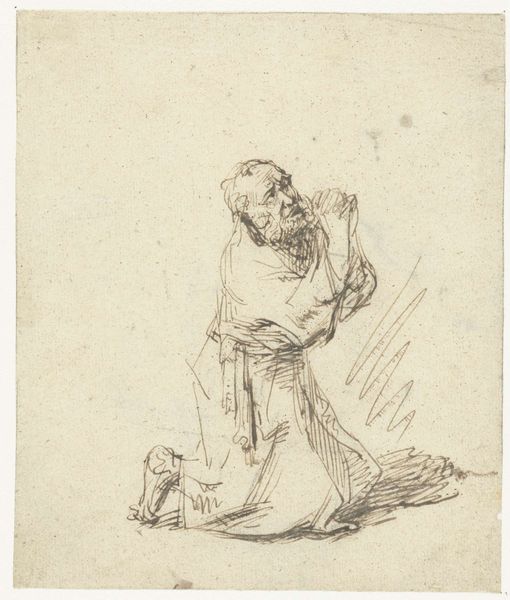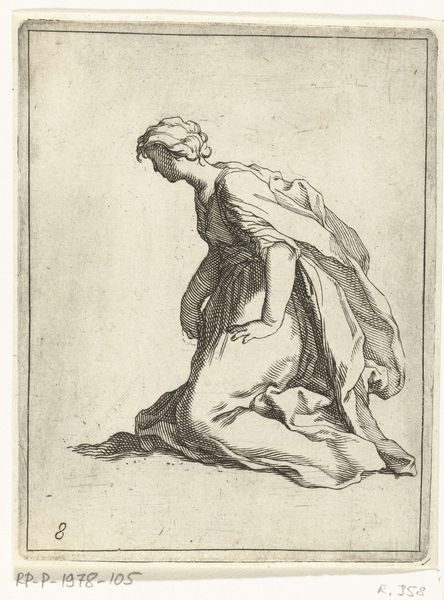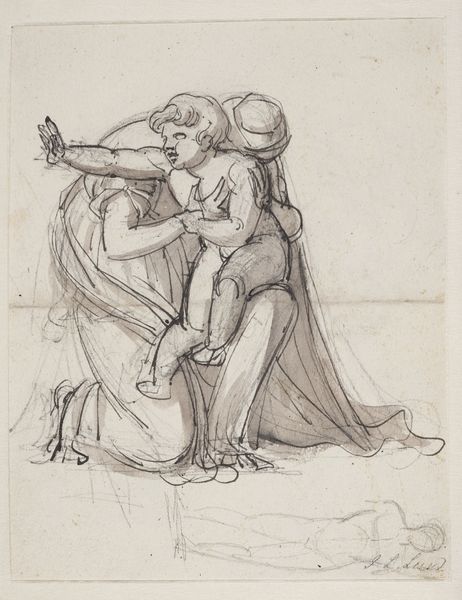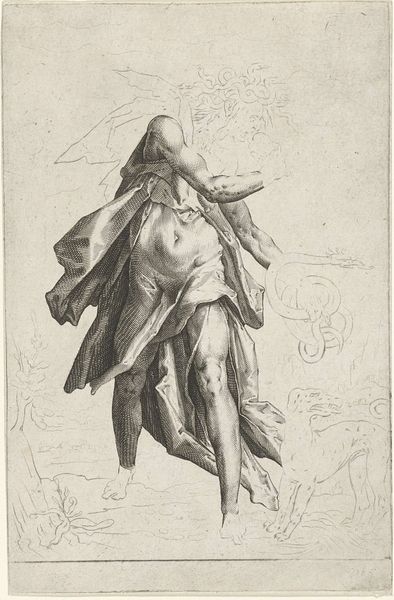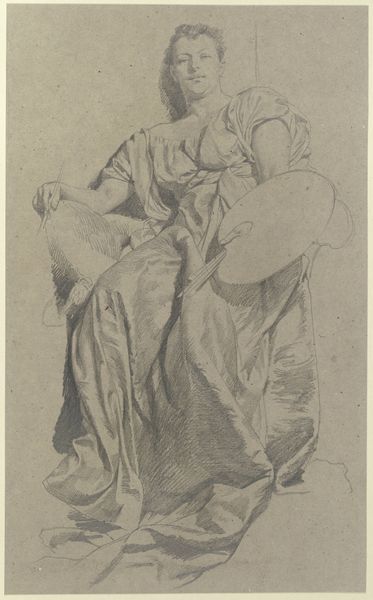
drawing, paper, pencil
#
portrait
#
drawing
#
dutch-golden-age
#
pencil sketch
#
landscape
#
figuration
#
paper
#
pencil drawing
#
pencil
#
genre-painting
Dimensions: height 210 mm, width 155 mm
Copyright: Rijks Museum: Open Domain
Editor: Here we have Harmen ter Borch's "Child Carried by a Woman, From Behind," a pencil drawing on paper, made sometime around 1651 or 1652. There's something incredibly tender about the simple depiction. It makes me think of the daily lives of women, but what strikes you about this piece? Curator: What interests me immediately is the material reality implied here. Ter Borch chooses pencil and paper, humble materials. This points to a specific kind of artistic production, doesn't it? Not a grand commission, perhaps, but something more immediate, perhaps tied to the domestic sphere itself? Editor: You mean like a sketch he did while at home, maybe? Does that affect how we should value it? Curator: Precisely! And consider the subject: a woman carrying a child. Who would have had the time or opportunity to depict such a subject, and why? What kind of labor is visualized here? Not the glorious battles or aristocratic portraits we often associate with this era. How might this choice of subject and medium be seen as quietly subversive, democratizing art by showing us an ordinary activity of the working class? Editor: I see what you mean. It's easy to overlook the sheer amount of labor involved in daily life back then, and how Ter Borch is sort of dignifying that work with his drawing. It is not like your average golden age painting, but it shows its reality. Curator: Exactly. Think about where Ter Borch likely acquired his pencils and paper. Were they locally produced, or did they rely on wider networks of trade and commerce? Understanding the materiality helps to reveal the interconnectedness of art, labor, and consumption in 17th-century Dutch society. Editor: That’s a great point. I didn't think about the trade aspect that much, that paper would have been sourced from elsewhere. So by looking closely at something as simple as the materials used, we get a much wider perspective on Ter Borch's world and even today. Thanks! Curator: Indeed. Material analysis offers a tangible pathway into broader cultural understandings.
Comments
No comments
Be the first to comment and join the conversation on the ultimate creative platform.
